There is a long history of Chinese Opera. According the difference of region, language and culture, there are hundreds of varieties of different Chinese Operas. According to the statistics result of the Chinese National Academy of Arts, there are 367 types of Chinese Operas in the 1950s and 267 types existing types of Chinese Operas in 2005. Cantonese Opera is the major type of Chinese Opera in Guangdong. In 2009, Cantonese Opera, Beijing Opera and Tibetan opera were listed as the UNESCO Intangible Cultural Heritage.
中國傳統戲曲源遠流長,發展至今根據地域、語言和文化的不同,發展出數百個劇種。根據中國藝術研究院調查,1950年代中國共有367個劇種,而到了2005年,仍保存下來的劇種有267個。粵劇是中國廣東地區以粵語為主的劇集,於2009年與京劇及藏劇同被列入聯合國世界級非物質文化遺產,是中國流傳下來的藝術瑰寶。

As the impoartant center of Cantonese Opera, we have a “Cantonese Opera Heritage Hall” in the HK Heritage Museum. Before Introducing the Cantonese Opera and the exhibition, I would like to share a youtube video to let you have a concept of “Cantonese Opera”.
作為粵劇的重要基地,香港的文化博物館就有一個《粵劇文物館》,為世人介紹粵劇這個人類的重要寶藏。在介紹之前,我先在Youtube找了一段粵劇視頻,讓大家先有一個概念。
Origin of Cantonese Opera粤劇起源
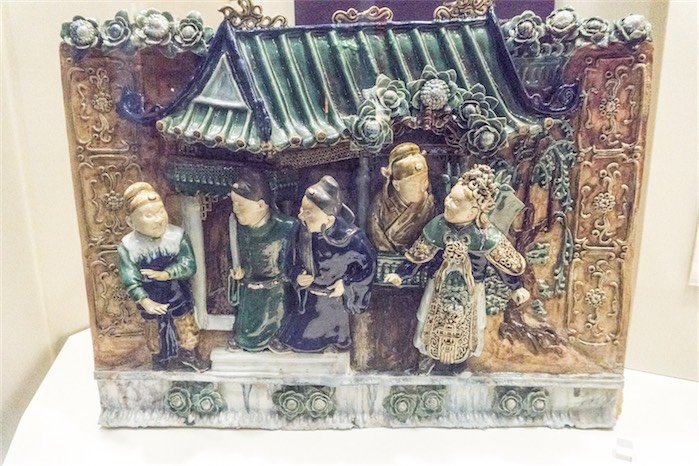
Cantonese Opera is also known as “Guangdong Drama” as it is found in Guangdong. It was found in the Ming Dynasty (around 1522-1566). Cantonese Opera is a blend of different opera styles of other Chinese opera and the tradition of Guangdong music and telling storesi through song.
Foshan was the home for most Cantonese Opera in around 1736-1795. In around 1851-1861, Artist Li Wenmao launched a revolution against the Chinese Government resulting in a ban against Cantonese Opera. Later the ban was lifted and Cantonese Opera developed again and moved from Foshan to Guangzhou. The language of Cantonese Opera also gradually shifted from Guilin Mandarin to Cantonese.
粵劇又稱「廣府大戲」,是中國廣東地區的主要戲曲劇集,源於明朝時期。它吸納了中國其他戲曲的風格,加入廣東民問的說唱和音樂,形成獨特的粵劇風格。
乾隆年間,粵劇本以廣東佛山為大本營,後因粵劇藝人李文茂反清起義遭禁。後來禁令被解,粵劇重新發展並將重心轉移到廣州,演唱語言亦由桂林官話漸改為粵語。
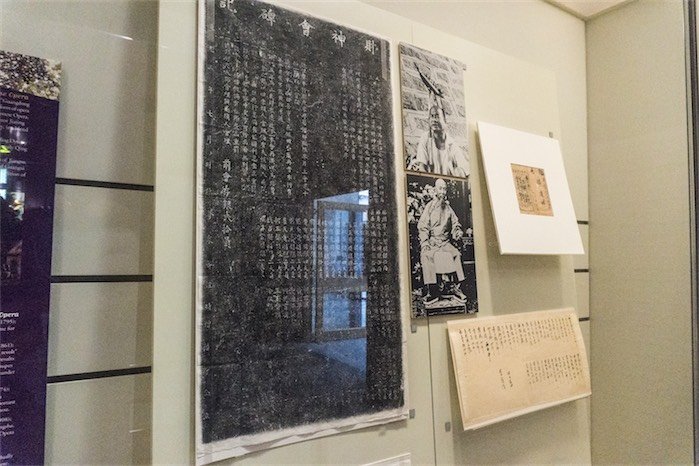
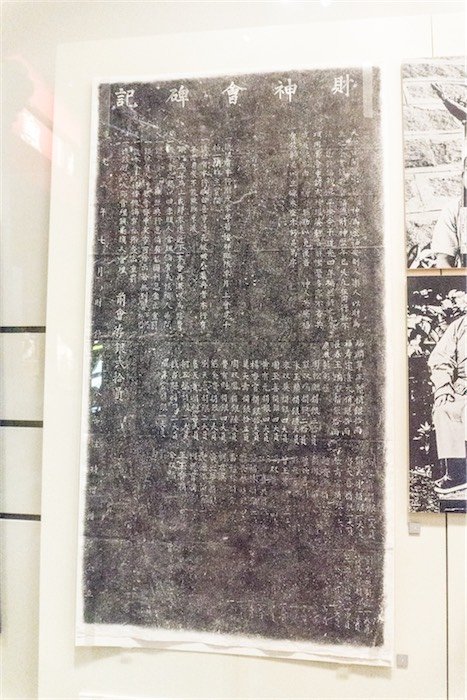
The earliest record of Cantonese Opera Troupe found
現存最古的粵劇戲班紀錄
The stage of early Cantonese Opera – Bamboo Shed Theatre 早期的粵劇舞台 – 戲棚
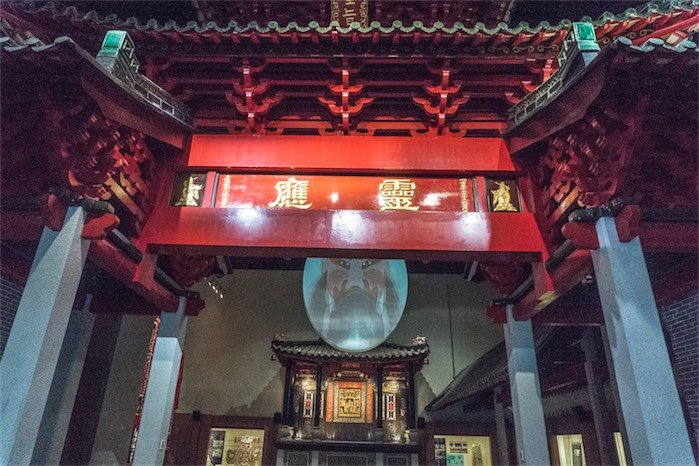
In the early stage, Cantonese Opera was performed on the temple stage or under a temporary shed built on village grounds. The simplest forms of village theatre could just be putting a few table together. And the most elaborate sheds contain a stage, audience seats and also a backstage. Shed theaters were made from bamboo which is highly flammable. Later in 1960s, shed theatres were made of galvanized iron. But during traditional events today, we can still bamboo shed theatres in Hong Kong.
最早期的粵劇主要在神廟的戲台或民間臨時搭建的戲棚演出,最簡陋的戲棚可以由幾張桌了併在一起的開始演出,而比較具規模的戲棚則擁有戲台、觀眾席和後台部份。早期的戲棚以竹木搭建,極易失火,後來在60年代初開始改由鋅鐵搭建,不過,在今天的中國傳統節日,我們在香港仍能見到以竹木搭成的大型戲棚。
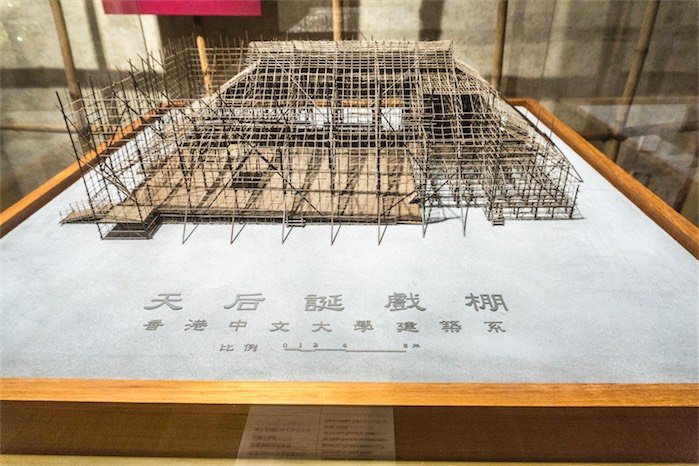
The stage of early Cantonese Opera – temple Stage 早期的粵劇舞台 – 戲台
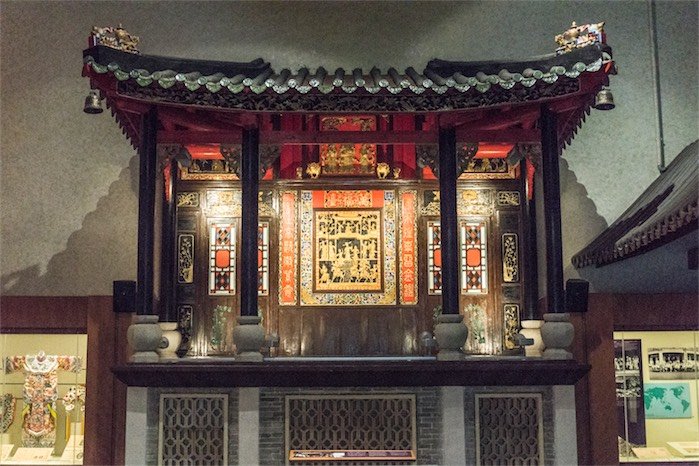
Temple stage was a performance venue built in temples. It was the main performance venue of Cantonese Opera in the early stage. But now there no active temple stage anymore. The oldest existing temple stage is the Wanfutai in Foshan, Guangdong. Wanfutai means “Ten Thousand Blessings Opera Stage” in Chinese. It is the one of the most important venue in the history of Cantonese Opera. IN the early stage, all newly formed opera trouple had to stage their first performance at the Wanfutai.
戲台是建立廟宇內的固定表演舞台,也是早期粵劇的表演場所之一,不過今天已再沒有粵劇在戲台演出了。現存最古老的戲台是佛山祖廟戲台,後改稱「萬福台」,是粵劇發展史中最重要的場所之一,相傳當年戲班組班時,第一場的演出一定在「萬福台」舉行。
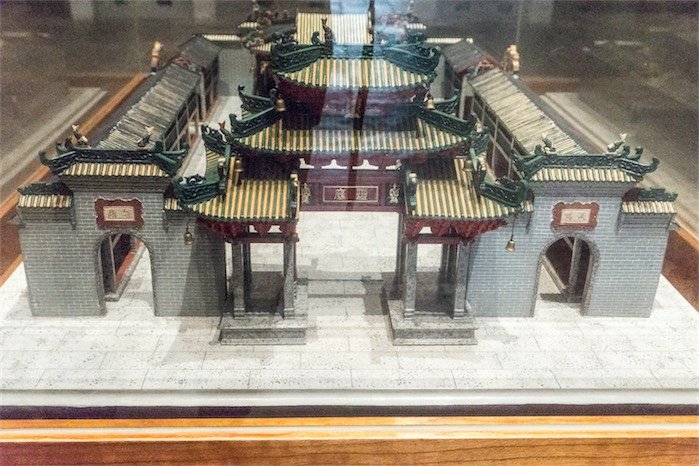
Model of Wanfutai 萬福台的模型
Cantonese Opera in Hong Kong – Red Boat Troupe粵劇在香港 – 紅船戲班
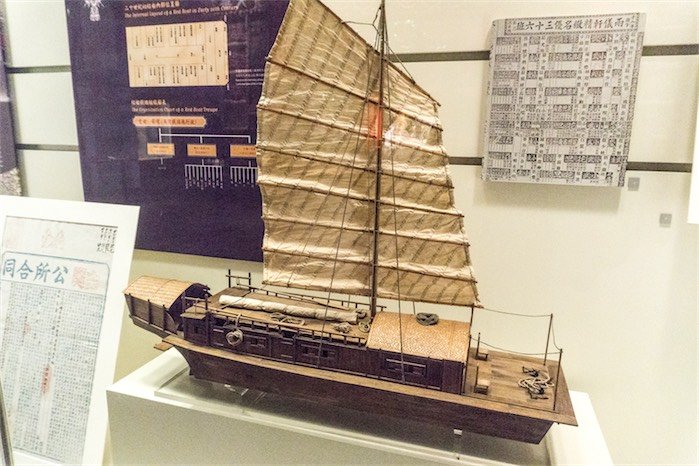
As Cantonese Opera became popular in Guangdong, Opera troupes started to have tours in Guangdong. Each troupe had their own boat called the “Red Boat”. The life in a Red Boat Troupe was rigid with rules for allocation of beds as well as the division of labor for artist. It is the base of the structure of a Cantonese Opera Troupe nowadays. Because of Red Boat, Cantonese Opera was brought to Hong Kong.
In the 1930s, Cantonese Opera troupes started to performed in Cinema and the transportation between cities became convenient, resulting in the gradual disappearance of the Red Boat Troupe.
粵劇在廣東地區越來越受歡迎,故在十九世紀末至二十世紀初,粵劇戲班開始在珠江三角洲一帶巡迴演出,他們乘坐的船叫「紅船」。紅船戲班的建制很嚴格,由臥舖分配至藝人的職責恂有規定,亦奠定了粵劇戲班組織的基礎。亦因紅船,粵劇被帶到了香港,開始了香港的粵劇發展。
1930年代,粵劇的演出場地開始轉入城市的戲院,加上各城市的交通開始便利,紅船戲班亦慢慢隨之沒落。
Cantonese Opera in Hong Kong – Center of Cantonese Opera粵劇在香港 – 成為粵劇大本營
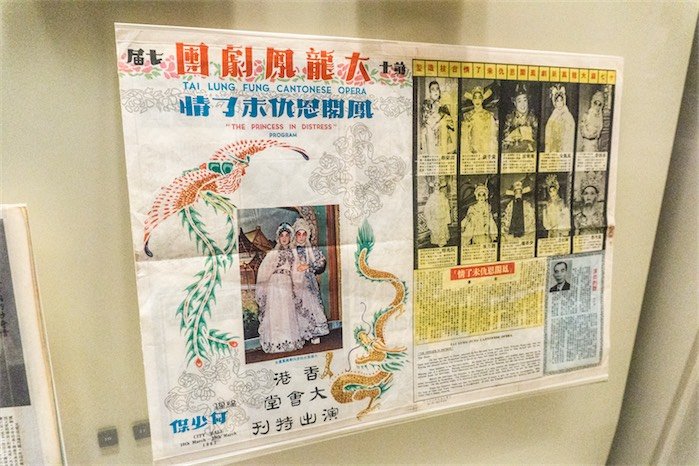
Since Cantonese Opera started perform in Hong Kong, it became the major entertainment in Hong Kong. Many new Cantonese Opera Troupes were formed in HK, like the Kok Sin Sing Opera Troupe by Sit Kok Sin and the Tai Ping Opera Troupe by Ma Sze Tsang. They renovated Cantonese Opera from music to acting style and moved the performance stage into cinema.
At the end of 1950s, famous troupes started to leave HK to perform in the USA and Canada. Plus, the development of film industry, the attraction of Cantonese Opera decreased. Luckily there were lot of new Cantonese Opera Troupes formed and started to produce Cantonese Opera film. In China, due to the Cultural Revolution, Cantonese Opera was banned and artists escaped to HK. HK became the new center of Cantonese Opera.
自粵劇傳入香港後,成為了香港的主流娛樂節目,很多新的劇團紛紛在香港組成,如薛覺先的「覺先聲劇團」和馬師曾的「太平劇團」,他們不斷將粵劇創新和推出新的劇本,粵劇亦慢慢轉移到戲院演出。
於1950年代尾開始,各著名粵劇團開始離開香港到美加等地演出,加上電影業開始蓬勃,粵劇吸引力大減,幸而新的劇團開始拍攝粵劇電影,為粵劇注入生命力。加上中國開始文化大革命,粵劇被禁,內地的劇團紛紛逃亡到港,讓香港成為了粵劇的新基地。
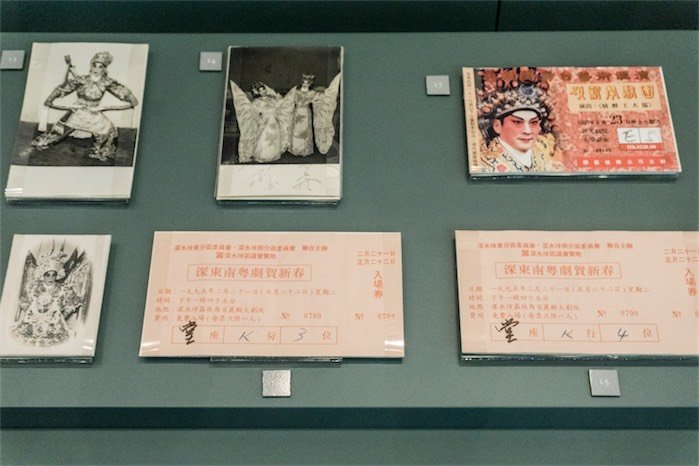
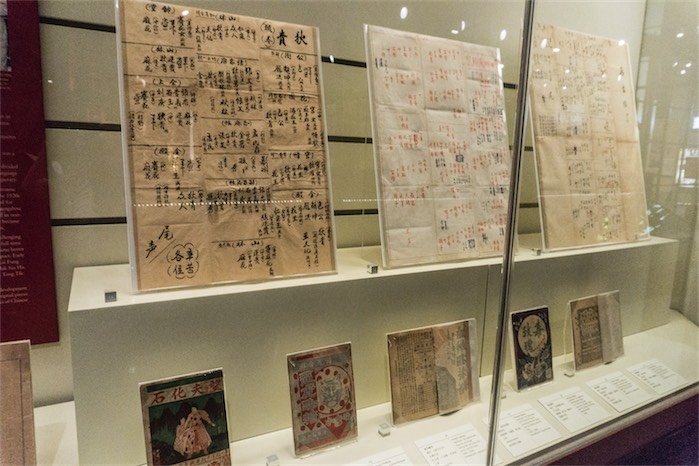
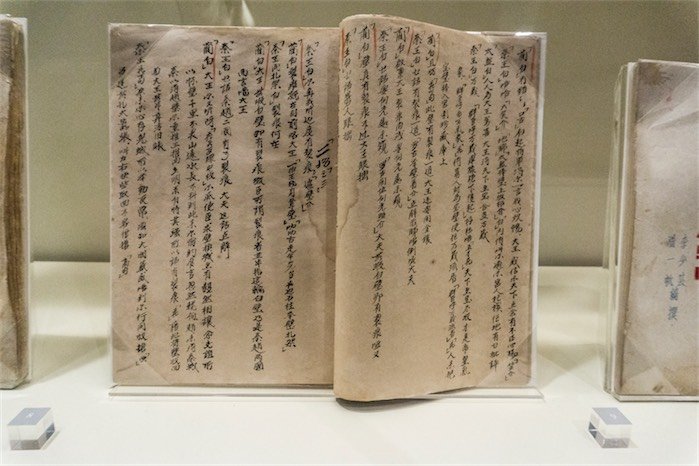
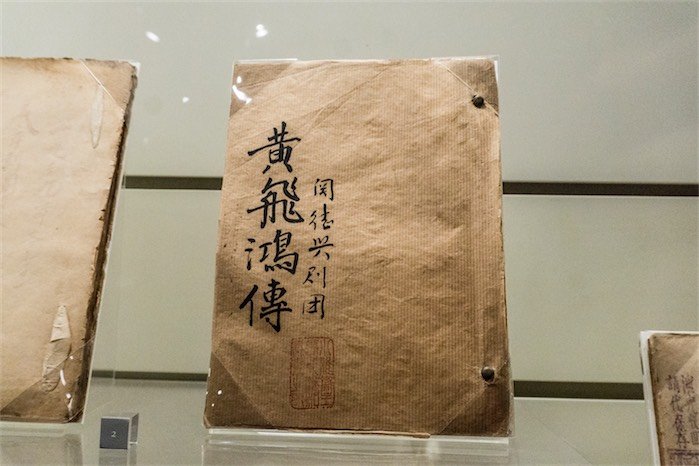
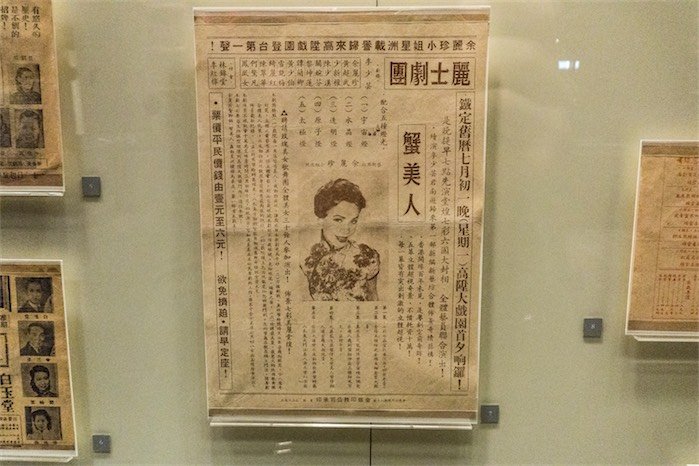
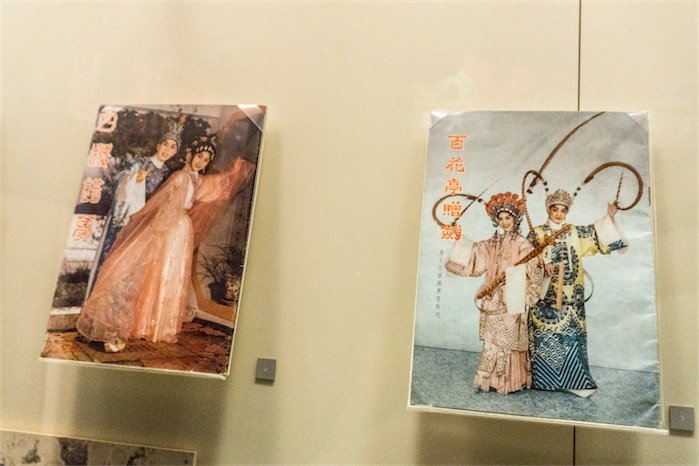
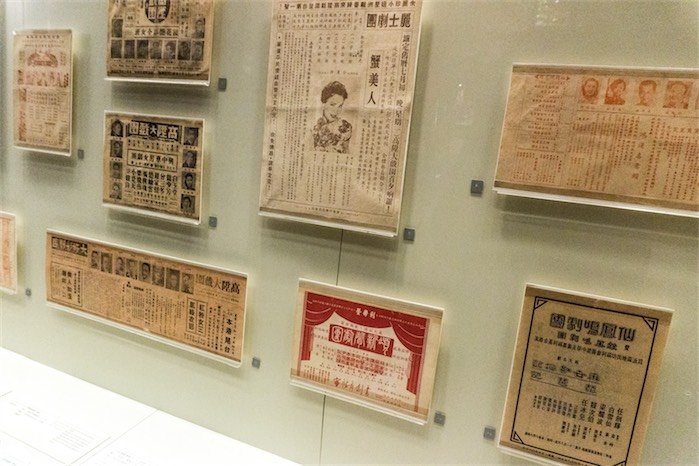
Scripts and Promotion materials of Cantonese Opera in HK
當年粵劇在香港的宣傳品和劇本
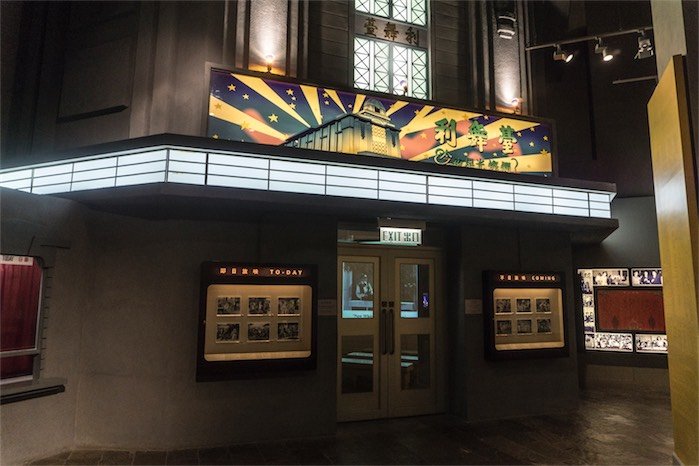
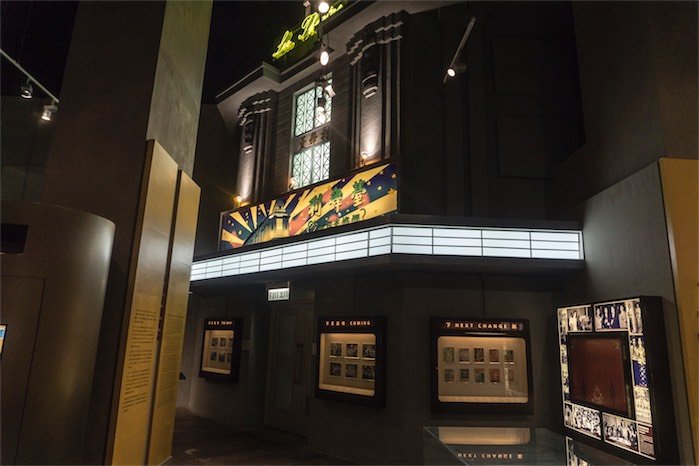
Lee Theatre, the first popular Cantonese Opera cinema in the first half of 20th century in HK
利舞臺戲院,20世代初期在香港最受歡迎的粵劇戲院
Characters of Cantonese Opera粵劇的角色
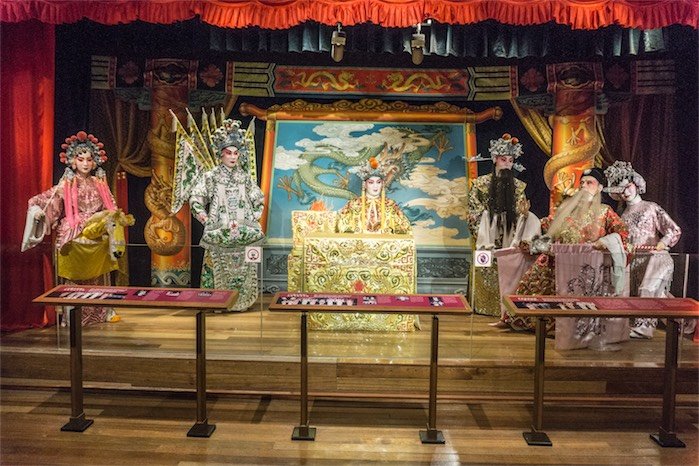
There were initially ten major roles in Cantonese Opera, but now has been changed to the system of “Six Major Role” which means using six main characters through the whole opera. They include “Man Mou Sang”, “Siu Sang”, “Jingyan Faa Daan, “Yibong Faa Daan”, “Cau Sang” and “Mou Sang”. There are four main types of characters:
Sang
Male roles in Cantonese Opera. There are different types of male roles: “Mau Sang” is the male warrior role; “Siu Sang” is young gentleman and usually the second leading male roles; “Lou Sang” is the old man role. Now the first leading male role is usually the “Man Mou Sang”, which act as a clean-shaven scholar-warrior.
Daan
Female roles in Cantonese Opera. “Jingyan Faa Daan” is the leading female role and the “Yibong Faa Daan” is the second leading female role.
Zing
Also known as the “painted-face”. They use face mask to express unique characters.
Cau
They are the comic roles in Cantonese Opera.
粵劇的角色稱為行當,本有十種主要角色稱為十大行當,不過發展至今日已成為「六柱制」,即由六位主要角色貫通整個劇目,分別為「文武生」、「小生」、「正印花旦」、「二幫花旦」、「丑生」及「武生」。角色分類可分為四種:
生
男性角色的統稱,根據角色定位有不同名字,如「武生」負責打鬥場面、「小生」為年輕角色,多為第二男主角、「老生」為老人角色等。現一般男主角多為「文武生」,同時肩任文戲及武打戲。
旦
女性角色的統稱,「正印花旦」為第一女主角,「二幫花旦」為第二女主角。
淨
男生角色,又稱「花面」,演員通常在臉上塗上面譜,以代表性格特出的角色。
丑
即「丑角」,主要演劇中的滑稽角色。
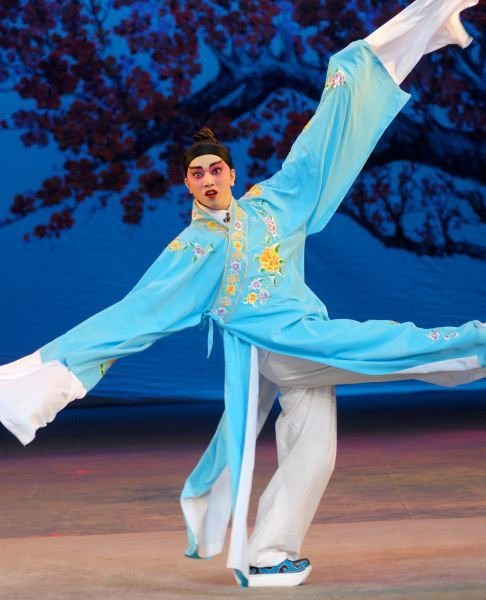
Sang 生 (Photo from The Academy of Chinese Studies)
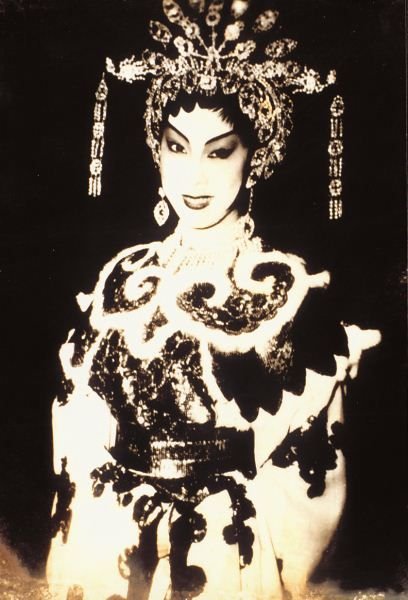
Daan 旦 (Photo from The Academy of Chinese Studies)
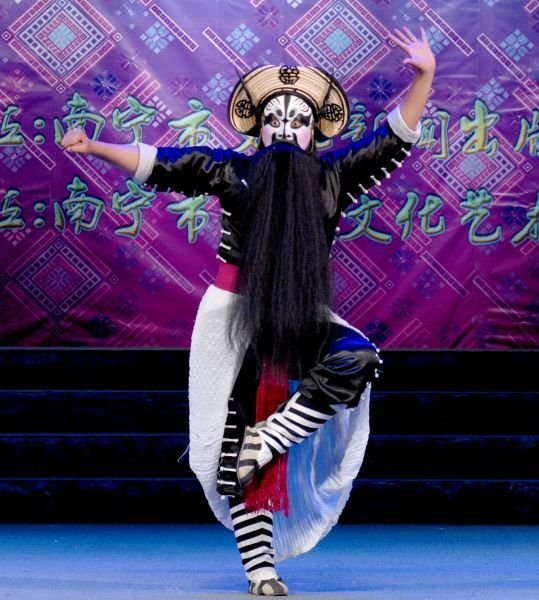
Zing 淨 (Photo from The Academy of Chinese Studies)
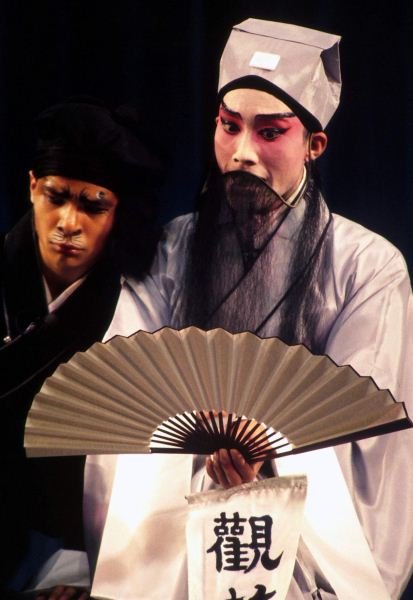
Cau 丑 (Photo from The Academy of Chinese Studies)
Costume and music of Cantonese Opera 粵劇的戲服與音樂
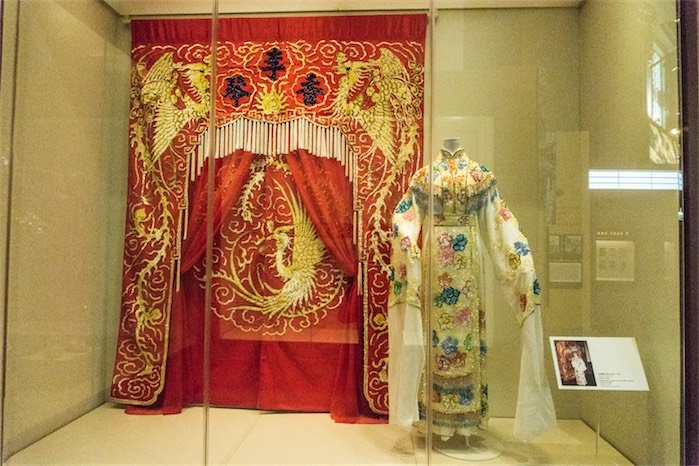
Costume of Cantonese Opera follows ancient China from Ming Dynasty to Qing Dynasty. Each type of costume corresponds the unique theme and character. In usual, lower-status characters wear less elaborate costumes and high rank characters have more decorative costumes. Major Career Artists usually wear their own costumes.
粵劇的服裝大多參考明朝至清朝的服飾,當中分門別類,極其考究,一般情況下,越漂亮越閃亮的服裝代表該角色在劇中越重要,很多大老倌,即粵劇界的明星們,都擁有自己私人的戲服和裝飾。
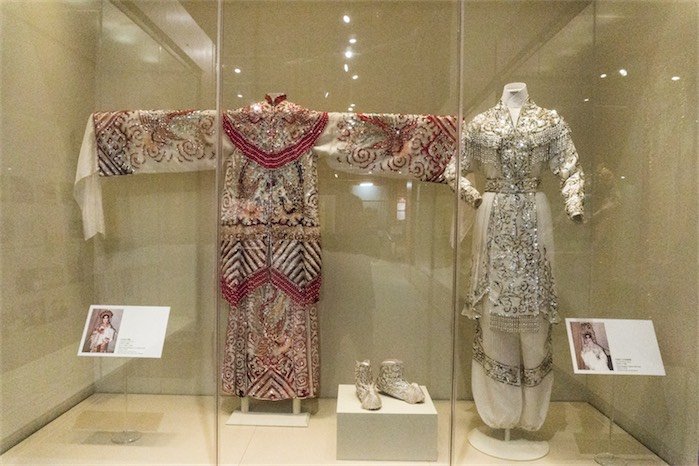
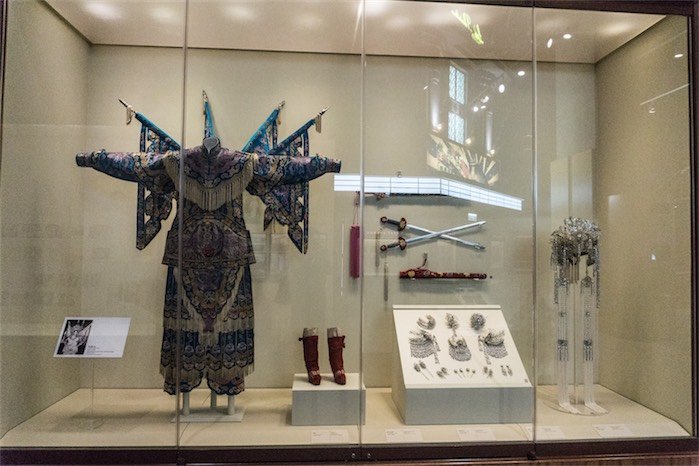
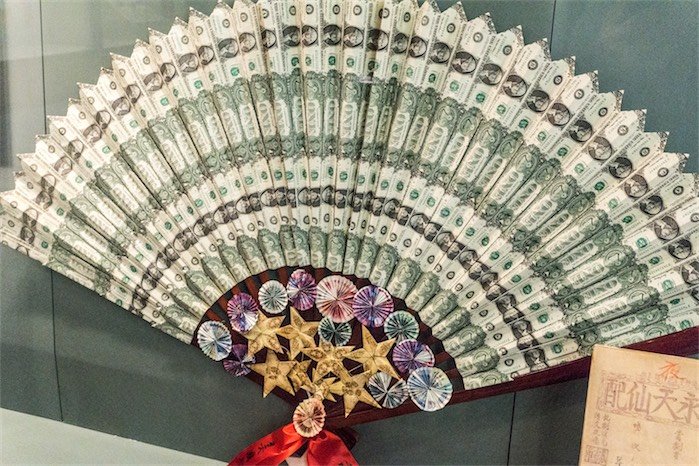
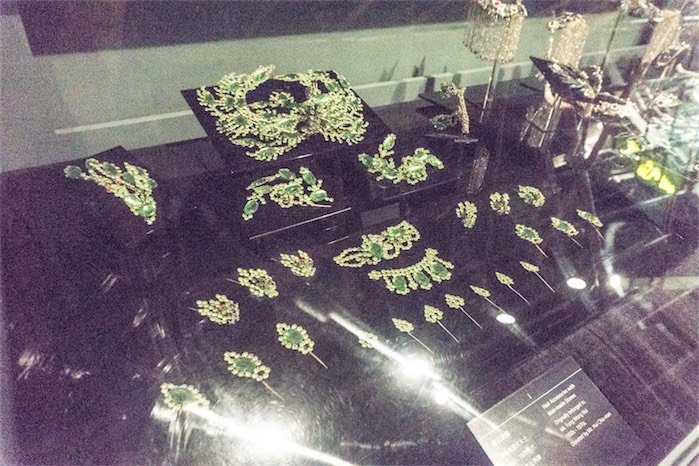
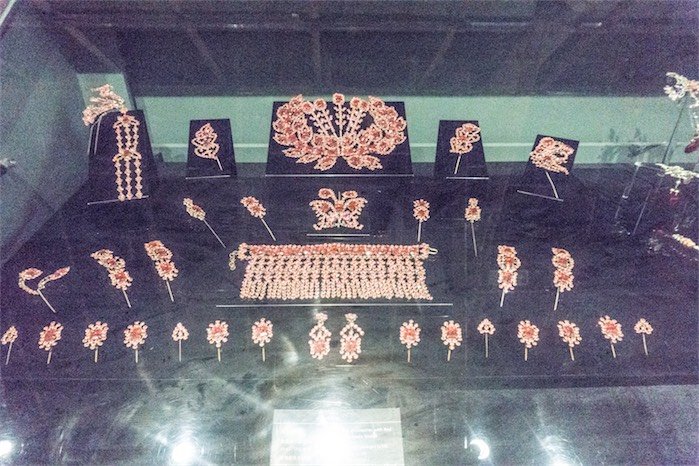
Costumes and Props of Cantonese Opera 粵劇的戲服與道具
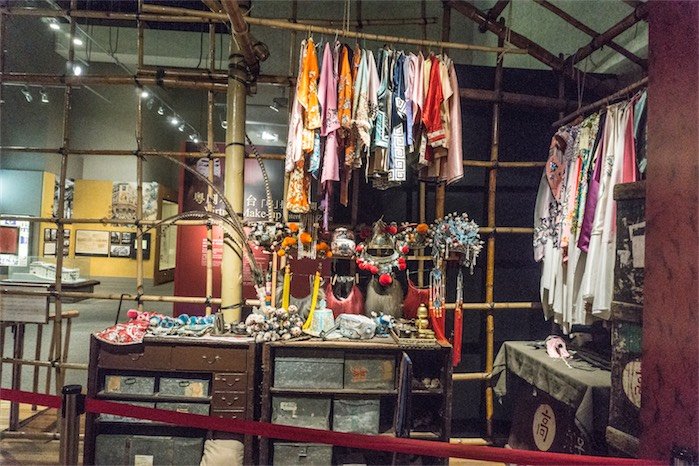
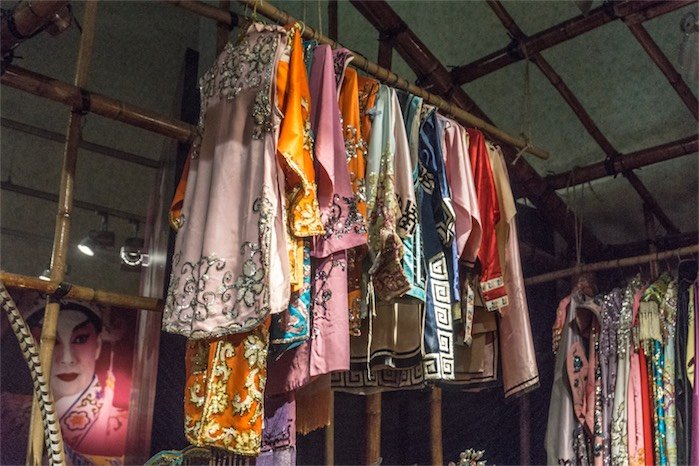
A changing Room of Cantonese Opera 粵劇的化妝室
The music of Cantonese Opera is mainly played in percussion patterns and musical patterns. The percussion patterns are played on the gongs and the drums to monitor the pace of the performance. The musical patterns are played by Chinese instruments including erxian, zhutiqin, yueqin, sanxian as interludes between the songs delivered by the performers, to enhance their artistic expressions on stage.
By the 1920s, western musical instruments were introduced to the genre, as a creative merging of Chinese and western instrumentation and aesthetics.
粵劇的音樂主要由鑼鼓點子及器樂曲組成,鑼鼓點子主要是調節場面節奏,而器樂曲多是在唱腔與唱腔之間的場面作襯托。早期的樂器有二弦、竹提琴、月琴、三弦、鼓竹敲擊等。1920年代開始,粵劇開始引用西洋樂器,後又加入其他中國樂器,成為了中西結合的獨特音樂藝術。
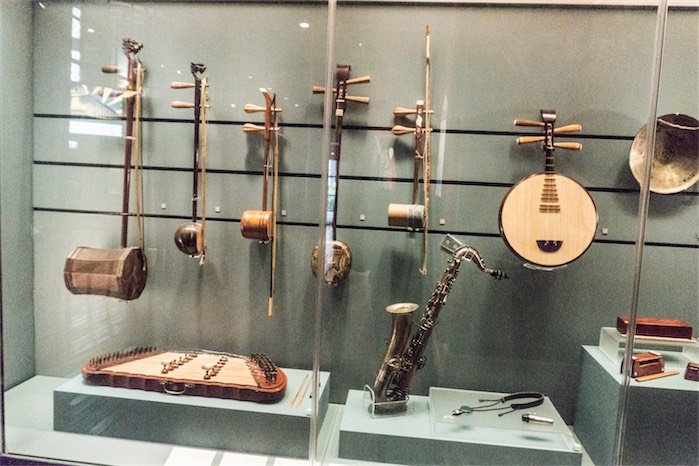
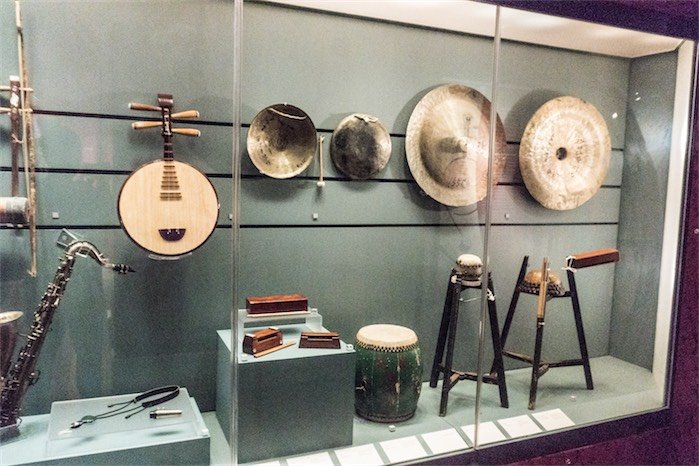
Musical Instruments of Cantonese Opera 粵劇的樂器
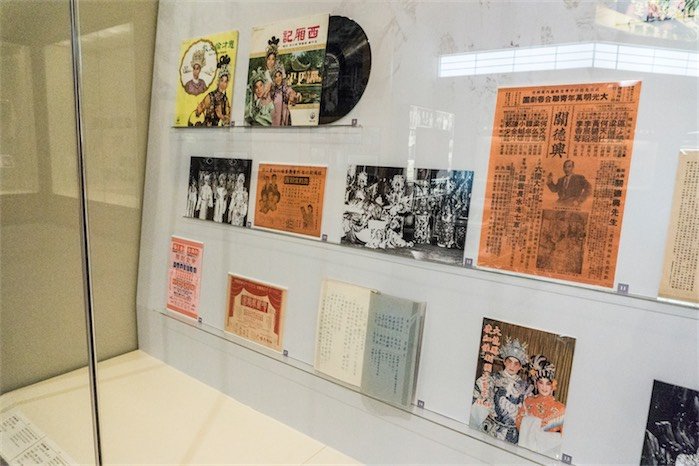
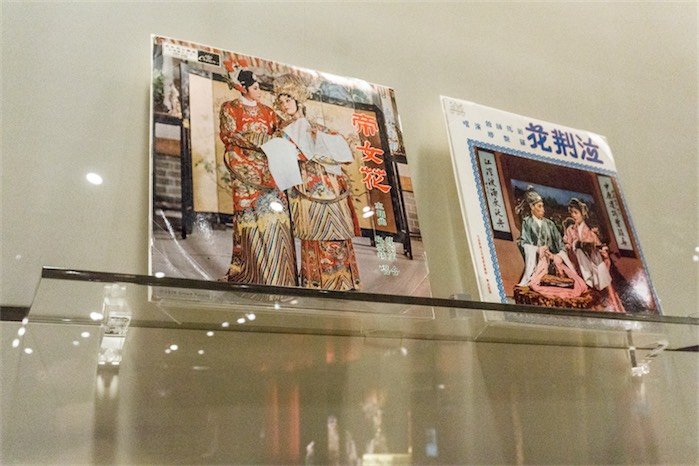
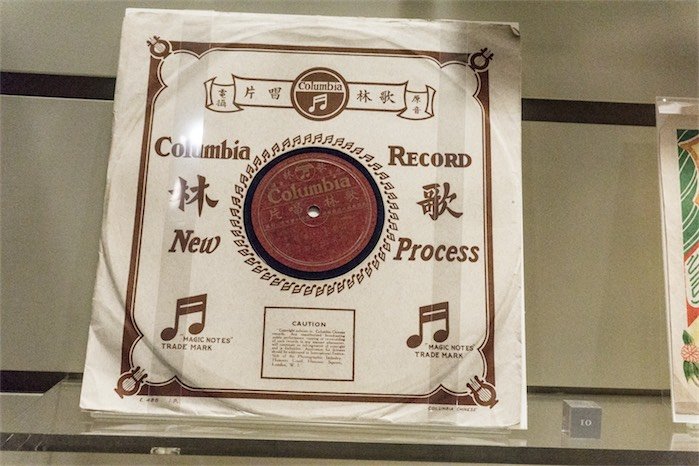
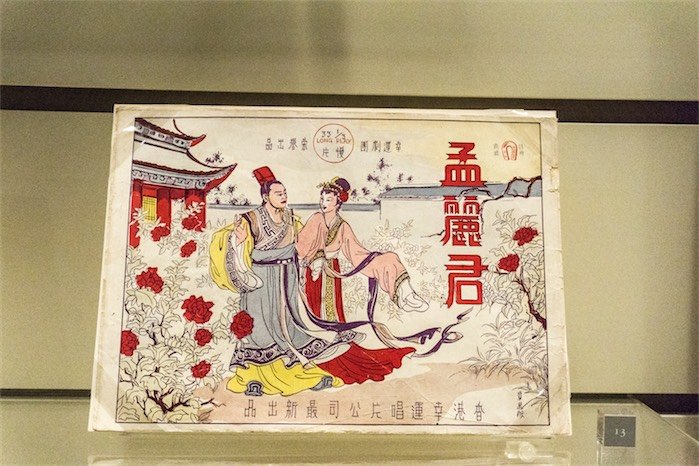
The Music of Cantonese Opera was very famous 當年的粵曲大受歡迎
The Future of Cantonese Opera粵劇的未來
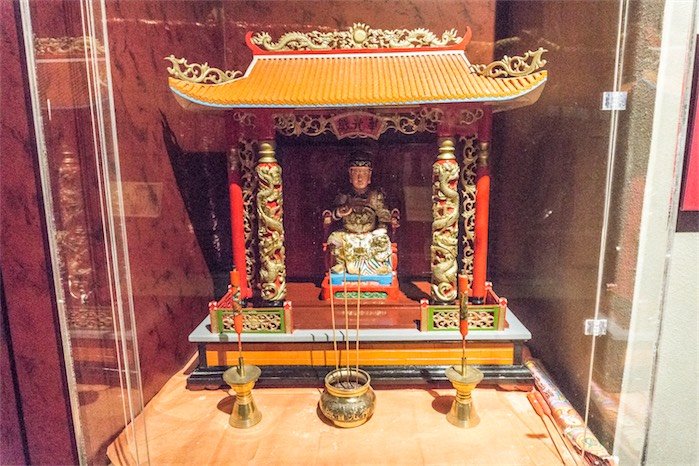
The statue of Master Huaguang, god of Cantonese Opera
粵劇戲神華光大帝像
Followed by the development of the society, we have new entertainments like games, movies. Together with the actors and audiences of Cantonese growing old, Cantonese Opera is facing a big challenge. Young generation thinks Cantonese Opera is old styled and feel no interest. And the performance venues of Cantonese Opera become less and less. The industry is trying hard to renovate such as opening Cantonese Opera course, rewriting new script from foreign opera and even publish Cantonese Opera in English. In China, the industry is also having new try like Cantonese Opera animes, and even rewriting animations story into Cantonese Opera.
隨著社會發展,越來越多新興娛樂湧現,粵劇的演員及觀眾老化,粵劇的發展成為一大挑戰,年輕人大多認為粵劇老套而不感興趣,粵劇的演出場地也越來越少。粵劇界正不斷創新求變,與開辦粵劇課程,改編外國話劇劇本,甚至推出英語粵劇。內地方面,自粵劇解禁後亦積極創新,如推出粵劇動畫,甚至動漫真人秀粵劇,希望把粵劇重新帶到主流位置。
Actually I am not interested in Cantonese Opera also. But I will also feel pity if we lose Cantonese Opera. Wish Cantonese Opera can keep going.
其實我本人亦對粵劇興趣不大,不過自小也已有接觸粵劇的機會,如粵劇真的就此失傳,我也會感到十分可惜,不過,要我協助推動粵劇發展,我又沒有這樣的動力,只能希望粵劇能多撐幾年吧!
Again, A video for you!
!steemitworldmap 22.377122 lat 114.1831763 long d3scr
謝謝你能抽空閱讀這篇文章,我平日喜歡分享香港的故事,希望大家多多支持,我會繼續努力!
Thanks for spending your time to read my articles. I like to share stories of Hong Kong. I wish you may support me and I will keep going!

